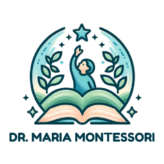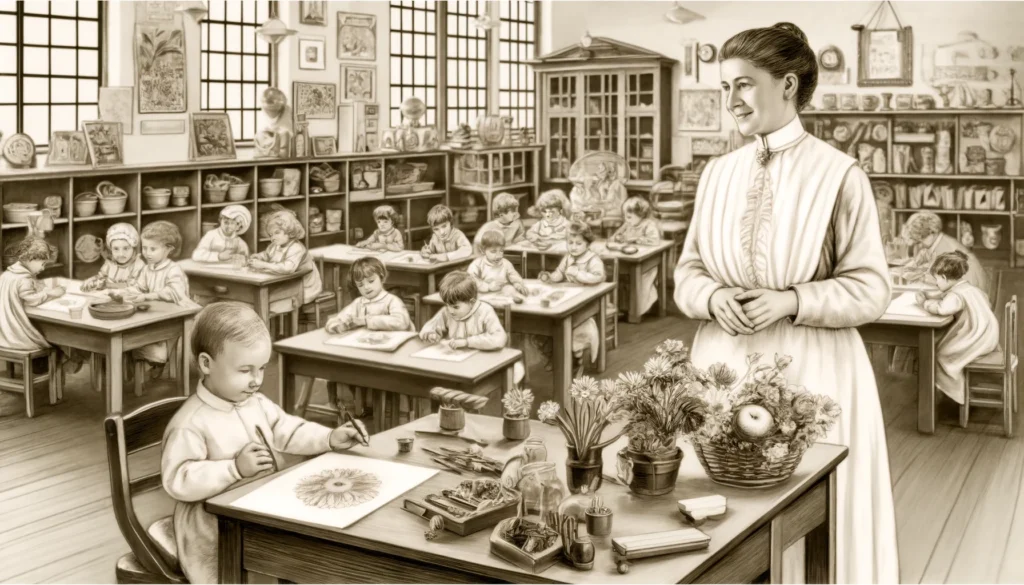In the early 20th century, a groundbreaking educational approach began to take shape, spearheaded by an innovative Italian physician and educator named Maria Montessori. Her revolutionary methods would eventually transform early childhood education worldwide. The origins of this transformative journey can be traced back to the establishment of the first Casa dei Bambini, or Children’s House, in Rome. This article delves into the pivotal years from 1906 to 1911, highlighting the evolution and impact of Montessori’s educational philosophy during her time at Casa dei Bambini.
The Inception of Casa dei Bambini
In 1906, Maria Montessori was invited to oversee a unique educational project in the San Lorenzo district of Rome. The project aimed to support the children of working-class families living in a newly constructed apartment building. This initiative provided Montessori with an opportunity to apply her educational theories to children without mental disabilities, which was a significant departure from her previous work at the Orthophrenic School. Montessori eagerly accepted the challenge, and on January 6, 1907, the first Casa dei Bambini was inaugurated, enrolling between 50 and 60 children aged two or three to six or seven years old.
The initial setup of the classroom was modest. It included a teacher’s table, a blackboard, a stove, small chairs, armchairs, group tables for the children, and a locked cabinet for the educational materials Montessori had developed. The activities designed for the children were practical and aimed at fostering independence and self-care. These included dressing and undressing, environmental care tasks such as dusting and sweeping, and tending to a garden. Montessori’s specially designed educational materials were also introduced to the children, under her supervision but not direct teaching. The day-to-day teaching and care were managed by the building porter’s daughter, following Montessori’s guidance.
Observations and Foundations of the Montessori Method
In this pioneering classroom, Montessori made several key observations that would form the foundation of her educational philosophy. She noted that the children displayed deep concentration and repeated activities multiple times, demonstrating a keen sensitivity to order in their environment. When given the freedom to choose their activities, the children showed a marked preference for practical tasks and Montessori’s educational materials over traditional toys. Surprisingly, they were also unmotivated by sweets and other external rewards, exhibiting a spontaneous sense of self-discipline over time.
Based on these observations, Montessori implemented several practices that became hallmarks of her method. She replaced the heavy, cumbersome furniture with child-sized tables and chairs that the children could easily move. She placed child-sized materials on low, accessible shelves and expanded the range of practical activities to include a variety of exercises for self-care and environmental care. These activities included flower arranging, hand washing, gymnastics, pet care, and cooking. Additionally, Montessori incorporated large open-air sections into the classroom, allowing children the freedom to move between different areas and activities.
Montessori’s book outlines a typical winter’s day of lessons, starting at 9:00 am and ending at 4:00 pm. The daily schedule included a variety of activities designed to promote independence and self-discipline:
- 9:00-10:00: Entrance, greeting, personal cleanliness inspection, practical life exercises, room tidying, language and conversation periods, and religious exercises.
- 10:00-11:00: Intellectual exercises, objective lessons with rest periods, nomenclature, and sensory exercises.
- 11:00-11:30: Simple gymnastics and graceful movements.
- 11:30-12:00: Luncheon with a short prayer.
- 12:00-1:00: Free games.
- 1:00-2:00: Directed games, practical life exercises by older children, cleanliness inspection, and conversation.
- 2:00-3:00: Manual work such as clay modeling and design.
- 3:00-4:00: Collective gymnastics, songs, and activities to develop forethought, like visiting and caring for plants and animals.
Montessori believed that through independent work, children could achieve new levels of autonomy and self-motivation, leading to greater understanding. She saw each child as an individual and treated them accordingly, fostering a learning environment that acknowledged and nurtured their unique potential.
The Spread of Montessori Education in Italy
The success of the first Casa dei Bambini led to the opening of a second Casa on April 7, 1907. The children continued to exhibit impressive concentration, attention, and self-discipline, attracting the interest of educators, journalists, and public figures. By the fall of 1907, Montessori began experimenting with teaching materials for writing and reading, such as sandpaper letters, moveable cutout letters, and picture cards with labels. Children as young as four and five engaged eagerly with these materials and rapidly developed writing and reading skills beyond their expected age level, further highlighting the effectiveness of Montessori’s methods.
The rapid success of these early Casa dei Bambini centers prompted the establishment of three more by 1908. Montessori’s methods began to replace traditional Froebellian approaches in orphanages and kindergartens across Italian Switzerland. The hallmark of Montessori’s approach was the respect for the child’s natural psychological development, and her educational practices were rooted in careful observation and adaptation based on the children’s responses to their environment and activities.
In 1909, Montessori held her first teacher training course in Città di Castello, Italy. This course marked a significant milestone in the dissemination of her educational philosophy. That same year, she published her seminal work, “Il Metodo della Pedagogia Scientifica Applicato All’Educazione Infantile Nelle Case Dei Bambini” (The Method of Scientific Pedagogy Applied to the Education of Children in the Children’s Houses), which detailed her observations and methods. This book became a foundational text for Montessori educators and played a crucial role in spreading her ideas.
The success of the teacher training courses continued, with additional courses held in Rome in 1910 and Milan in 1911. As Montessori’s reputation grew, so did the international interest in her methods. Educators from around the world began to take notice of the remarkable results achieved by the children in Montessori’s programs. By 1911, Montessori’s educational philosophy had garnered significant attention, leading her to devote herself entirely to this work. She resigned from her position at the University of Rome in 1919 to focus on developing her methods and training teachers full-time.
The Montessori Method Takes Root Internationally
The impact of Montessori’s work during the Casa dei Bambini years was profound, setting the stage for the global spread of her educational philosophy. Her methods, which emphasized respect for the child’s natural development, hands-on learning, and a prepared environment, resonated with educators and parents alike. The success of her approach in the early Casa dei Bambini classrooms demonstrated the potential for these methods to transform education on a larger scale.
Montessori’s vision extended beyond Italy. She believed that her educational philosophy could benefit children worldwide, regardless of their cultural or socioeconomic backgrounds. The teacher training courses she conducted not only in Italy but also internationally played a crucial role in spreading her methods. Educators who trained under Montessori’s guidance returned to their home countries equipped with the knowledge and skills to establish Montessori schools and programs.
One of the key principles of Montessori education is the idea of the “prepared environment.” This concept emphasizes creating a learning space that supports the child’s natural development and encourages independence. The prepared environment includes child-sized furniture, accessible materials, and a variety of activities that promote practical life skills, sensory development, and intellectual growth. Montessori’s careful attention to the design and organization of the classroom environment was instrumental in fostering a sense of order and autonomy among the children.
Another cornerstone of Montessori’s philosophy is the role of the teacher as an observer and guide. Rather than directing the children’s activities, the teacher provides a supportive environment and allows the children to explore and learn at their own pace. This approach respects the individual learning styles and developmental stages of each child, promoting a deeper and more meaningful engagement with the learning process.
Montessori’s educational philosophy also emphasizes the importance of mixed-age classrooms. In the Casa dei Bambini, children of different ages learned together, allowing younger children to observe and learn from their older peers. This structure fosters a sense of community and collaboration, as children develop social skills and empathy through their interactions with one another.
The years Maria Montessori spent developing her educational philosophy at the Casa dei Bambini were transformative, not only for the children she taught but also for the field of early childhood education. Her innovative methods, grounded in careful observation and respect for the child’s natural development, challenged traditional educational practices and paved the way for a new approach to learning.
The success of the Casa dei Bambini centers in Rome demonstrated the effectiveness of Montessori’s methods, leading to the widespread adoption of her educational philosophy in Italy and beyond. Montessori’s commitment to training teachers and sharing her insights through her writings ensured that her ideas would continue to influence educators and benefit children around the world.
Today, Montessori schools can be found in nearly every corner of the globe, a testament to the enduring impact of Maria Montessori’s vision. Her legacy lives on in the countless children who have experienced the joy of learning in a Montessori environment, where their individuality is honored, and their potential is nurtured.

